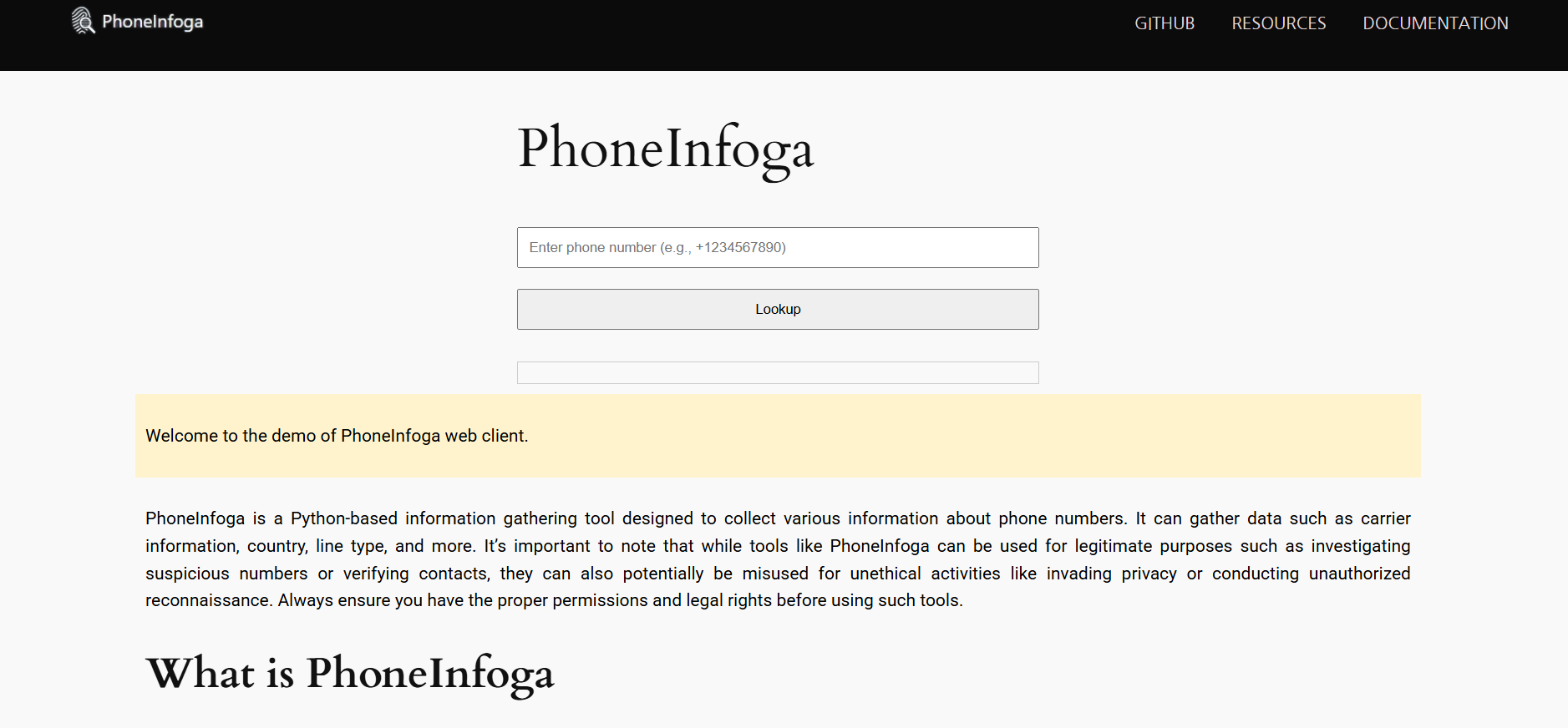Phone tracing tools have become increasingly important for security professionals, investigators, and curious individuals alike. One such tool gaining significant attention is PhoneInfoga. Designed to gather detailed information about phone numbers, PhoneInfoga promises insights into carrier details, geolocation, and country of origin. This article explores PhoneInfoga’s reliability, features, limitations, and the contexts in which it works best.
Understanding PhoneInfoga and Its Purpose
PhoneInfoga is an open-source tool that enables users to perform OSINT (Open Source Intelligence) investigations on phone numbers. It’s widely used for security auditing, fraud detection, and investigative research. By aggregating data from public sources, PhoneInfoga can reveal the phone number’s carrier, registered country, and even approximate geolocation. This capability is particularly valuable in cybersecurity, law enforcement, and fraud prevention sectors.
Unlike many commercial phone tracing tools, PhoneInfoga emphasizes transparency and privacy. Being open source means its code is publicly available, allowing experts to review its methods and improve its accuracy continuously. This openness also means users avoid hidden fees or unreliable data often associated with paid tracing services.
Core Features of PhoneInfoga
PhoneInfoga’s effectiveness stems from a few key features that make it a popular choice:
- Carrier Identification: By querying various telecom databases and public APIs, PhoneInfoga can detect the telecom carrier associated with the phone number. Knowing the carrier helps narrow down the number’s origin and can be crucial for verification or investigation purposes.
- Country Detection: PhoneInfoga accurately identifies the country where the phone number is registered. This is particularly useful in tracking international calls or understanding the geographic context of suspicious numbers.
- Geolocation Approximation: Although exact GPS coordinates are rarely available for privacy reasons, PhoneInfoga uses available data to estimate the phone number’s general location. This could be city or region level, aiding investigators in understanding where a number might be used.
- Integration with OSINT Tools: PhoneInfoga can be combined with other OSINT platforms and databases, enhancing its data richness. This makes it a versatile tool for researchers needing multi-layered phone number intelligence.
Accuracy of PhoneInfoga Data
Reliability in phone tracing depends heavily on data accuracy and timeliness. PhoneInfoga collects data from public sources such as telecom registries, open databases, and social media. Because of this reliance on publicly available information, its accuracy varies based on the data source’s quality.
- Carrier and Country Information: These details tend to be highly reliable, as telecom databases are regularly updated and phone number allocations rarely change rapidly. PhoneInfoga’s algorithm cross-references multiple databases to verify this information, increasing confidence in its output.
- Geolocation: PhoneInfoga’s geolocation is more approximate. While it can provide a general area or city, pinpointing an exact location is challenging due to privacy safeguards and the mobile nature of phone users. The estimated location is based on number prefixes or publicly available metadata, which may not reflect real-time movement or usage.
- International Numbers: Accuracy for international numbers is typically consistent for countries with well-maintained telecom databases. However, in regions with poor digital infrastructure or limited data sharing, PhoneInfoga’s results can be less reliable.
Practical Applications and Use Cases
PhoneInfoga’s data accuracy makes it particularly useful in several real-world scenarios:
- Cybersecurity Investigations: Security analysts use PhoneInfoga to validate phone numbers involved in phishing attempts, fraud, or social engineering attacks. Identifying the carrier and country helps in assessing the threat level and origin.
- Law Enforcement: Police and investigative agencies rely on tools like PhoneInfoga to gather initial intelligence on suspects or victims. While not a replacement for law enforcement databases, it serves as a valuable preliminary resource.
- Business Verification: Companies use PhoneInfoga to screen customer phone numbers for authenticity, reducing fraud risks in transactions or registrations.
- Personal Safety: Individuals sometimes employ PhoneInfoga to check suspicious calls or messages, allowing them to make informed decisions about engagement.
Limitations to Consider
Despite its strengths, PhoneInfoga has several limitations that affect its overall reliability:
- Dependence on Public Data: The tool’s accuracy is tied directly to the availability and quality of public data. If telecom providers or countries do not share updated information, PhoneInfoga’s results may be outdated or incomplete.
- No Real-Time Tracking: PhoneInfoga cannot track a phone’s live location or activity. It provides a snapshot based on static registration data, which is insufficient for dynamic tracking needs.
- Legal and Ethical Boundaries: While PhoneInfoga is legal in many jurisdictions, users must be cautious about privacy laws and regulations. Unauthorized phone tracing can lead to legal repercussions.
- Mobile Number Portability: In many countries, users can switch carriers while keeping their phone number. PhoneInfoga may report outdated carrier information if the databases have not yet reflected this change.
- Limited Social Media Integration: Unlike some commercial tools, PhoneInfoga’s direct access to social media or deep web databases is limited, which can reduce its ability to gather supplementary context.
User Experience and Accessibility
PhoneInfoga is primarily a command-line tool designed for users familiar with OSINT and cybersecurity practices. This technical nature can be a barrier for casual users who prefer intuitive graphical interfaces. However, various third-party projects have developed GUIs (Graphical User Interfaces) or integrated PhoneInfoga’s capabilities into broader platforms, improving accessibility.
Additionally, since PhoneInfoga is open source, it is highly customizable. Advanced users can tweak its code, add new data sources, or integrate it with other security tools to enhance performance and coverage.
Comparison with Other Phone Tracing Tools
When compared to paid or proprietary phone tracing services, PhoneInfoga holds its own due to its transparency and community-driven updates. Commercial services may provide more extensive databases and real-time tracking, but often come with subscription costs and privacy concerns.
Free online phone lookup services usually offer limited information or rely on user-submitted data, reducing reliability. PhoneInfoga strikes a balance by pulling from verifiable public databases and avoiding user bias.
Still, users requiring comprehensive background checks or live location tracking will need to combine PhoneInfoga with other tools or professional services.
Security and Privacy Considerations
Users must handle phone tracing data responsibly. PhoneInfoga respects privacy by sourcing only public information and avoiding invasive techniques. However, ethical use involves:
- Avoiding harassment or stalking
- Ensuring data usage complies with local laws
- Using information solely for legitimate security or investigative purposes
Organizations adopting PhoneInfoga in their workflows should establish clear policies and user training to prevent misuse.
Future Prospects and Development
The PhoneInfoga community continues to improve the tool by adding data sources, refining algorithms, and enhancing usability. Potential developments include:
- More accurate geolocation through AI-based analysis
- Expanded integration with social media and web scraping tools
- User-friendly web interfaces for broader adoption
- Automated alerting for suspicious phone number activity
These advances could significantly boost PhoneInfoga’s reliability and versatility, making it even more valuable for security professionals and everyday users.
Conclusion
PhoneInfoga proves to be a reliable tool for phone tracing within its scope of open-source intelligence gathering. Its strength lies in identifying the carrier, country, and providing an approximate geolocation based on publicly available data. While it does not offer real-time tracking or deep personal insights, it excels in transparency, accessibility, and data accuracy for many common investigative needs.
Users should consider PhoneInfoga as part of a broader toolkit, balancing its capabilities with an understanding of its limitations and ethical responsibilities. For those seeking a free, open-source, and reasonably reliable phone tracing solution, PhoneInfoga remains a top contender in the OSINT community.

